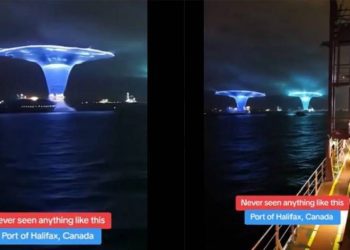ROUGHLY 64.5 light-years away, an exoplanet infamous for its violent weather has made a name for itself in another department: its smell.
Its atmosphere stinks of rotten eggs, according to data captured by the James Webb Space Telescope and analyzed by researchers at Johns Hopkins University.

Nasa has branded HD 189733 b one of the “most terrifying and mind-blowing destinations” in our galaxy.[/caption]
And while that would be hellish for you or I, scientists reckon it may actually be a good thing for understanding how planets are 'born'.
The gas giant, dubbed HD 189733 b, has trace amounts of hydrogen sulfide in its atmosphere – making the entire planet smell of sulfur, or rotten eggs.
“Hydrogen sulfide is a major molecule that we didn't know was there. We predicted it would be, and we know it's in Jupiter, but we hadn't really detected it outside the solar system,” said Guangwei Fu, an astrophysicist at Johns Hopkins who led the research.
“We're not looking for life on this planet because it's way too hot, but finding hydrogen sulfide is a stepping stone for finding this molecule on other planets and gaining more understanding of how different types of planets form.”
Alongside hydrogen sulfide, Fu's team found that HD 189733 b's atmosphere is mostly made up of water, carbon dioxide and carbon monoxide.
“Sulfur is a vital element for building more complex molecules, and—like carbon, nitrogen, oxygen, and phosphate—scientists need to study it more to fully understand how planets are made and what they're made of,” Fu added.
The planet is roughly the size of Jupiter, the largest in our solar system, which means it could fit around 1,300 Earth's inside it, according to Nasa.
But unlike Jupiter which is deathly cold, HD 189733 b sits closer to its own version of the sun, earning it the common astro-nickname of “hot Jupiter”.
“Say we study another 100 hot Jupiters and they're all sulfur enhanced,” asked Fu.
“What does that mean about how they were born and how they form differently compared to our own Jupiter?”
Life on HD 189733 b

Life on HD 189733 b would be impossible for us humans, but lets imagine for a second:
Nasa has branded HD 189733 b one of the “most terrifying and mind-blowing destinations” in our galaxy.
While it may resemble Earth from afar, with its marbled blue atmosphere – it couldn't be more different.
Not only would every breath you took smell of sulphur, but you have to tackle winds that blow up to 5,400mph with the stench of rotten eggs.
That's around seven times the speed of sound.
“And getting caught in the rain on this planet is more than an inconvenience,” according to Nasa. “It's death by a thousand cuts.”
This alien world is thought to rain glass – sideways – in its Tempest-dwarfing winds.
Not only that, the planet's surface, even on its dark side, reaches north of 650°C (1,200°F).
It's these harsh conditions that make the planet a very poor prospect for extraterrestrial life.
Fu's team have been able to rule out the presence of methane with 'unprecedented precision', thanks to the $10billion James Webb Space Telescope.
“We had been thinking this planet was too hot to have high concentrations of methane, and now we know that it doesn't,” he continued.
We want to know how these kinds of planets got there
Guangwei Fu, an astrophysicist at Johns Hopkins
The team also measured levels of heavy metals, which are commonly found on Jupiter.
Fu believes this will help answer questions about whether a planet's metallicity correlates to its mass – and how much or little.
Icy planets in our solar system, like Neptune, tend to contain more metals than gas giants like Jupiter or Saturn.
But whether this holds true for exoplanets – planets that lie outside of our solar system – remains a mystery.
“This Jupiter-mass planet is very close to Earth and has been very well studied.
“Now we have this new measurement to show that indeed the metal concentrations it has provided a very important anchor point to this study of how a planet's composition varies with its mass and radius,” Fu said.
“The findings support our understanding of how planets form through creating more solid material after initial core formation and then are naturally enhanced with heavy metals.”
But what Fu's team is really trying to crack is this: “We want to know how these kinds of planets got there,” he said.
And understanding what the atmosphere's of different exoplanets are made of will hopefully answer that question.
All you need to know about planets in our solar system
Our solar system is made up of nine planets with Earth the third closest to the Sun. But each planet has its own quirks, so find out more about them all…
- How old is Earth? Plus other facts on our planet
- How many moons does Mercury have?
- What color is Venus?
- How far away is Mars to Earth? And other facts on the red planet
- How big is Jupiter?
- How many moons does Saturn have?
- Does Uranus have rings?
- How many moons does Neptune have?
- How big is Pluto?
- How hot is the Sun?

































